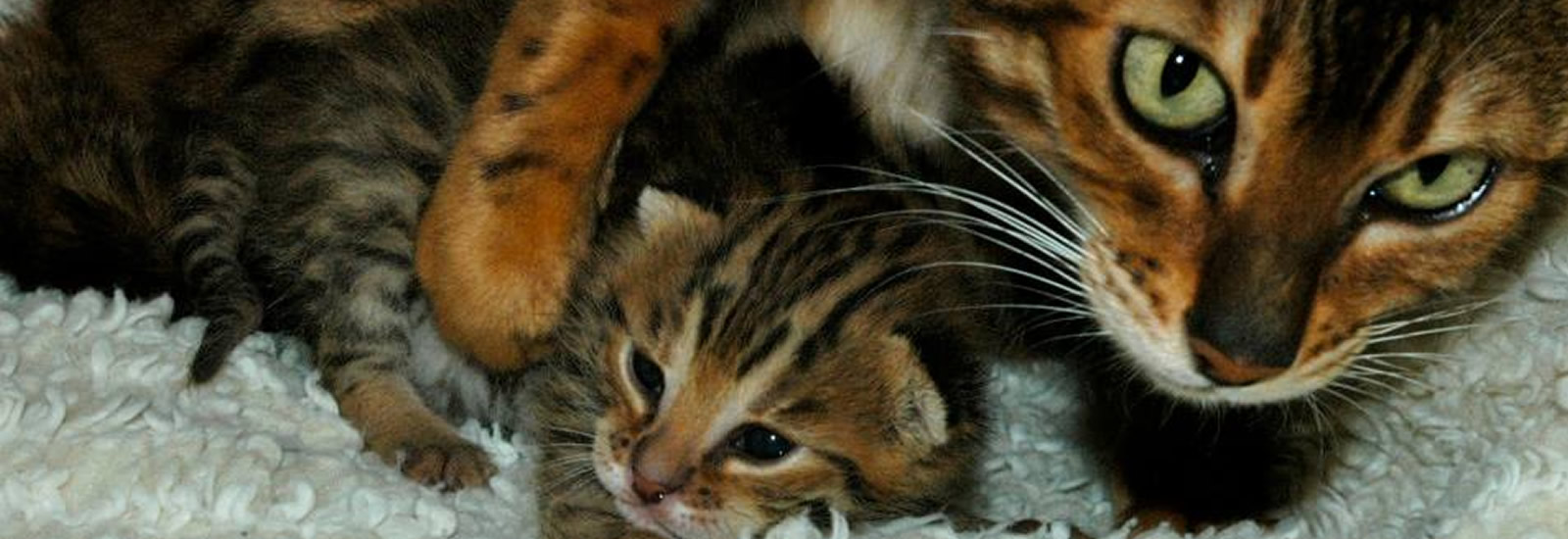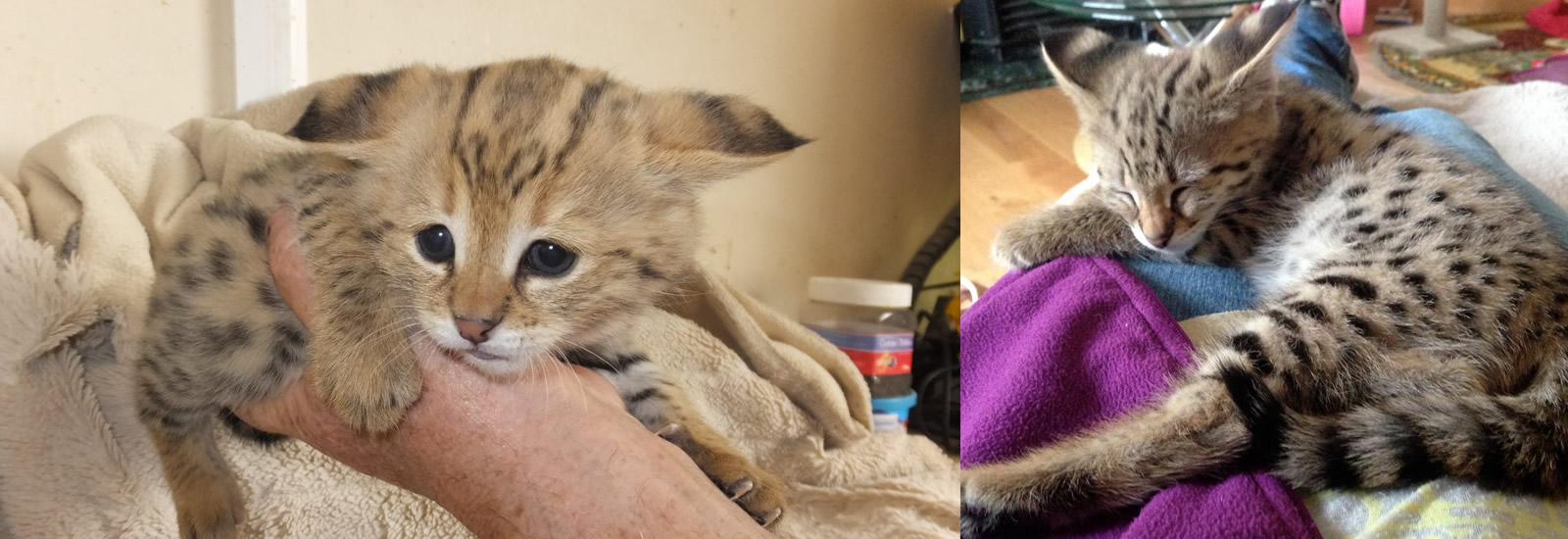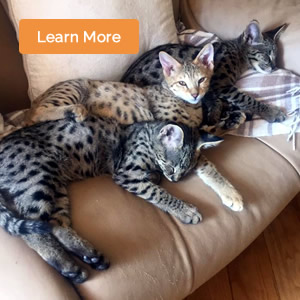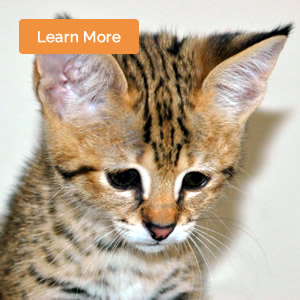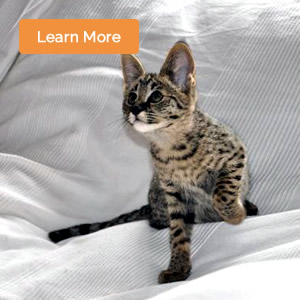The
Leopard Cat -
Founder of the Bengal Breed
By C. Esmond Gay - Sarez Bengals - 2004
The Bengal is now one of the most popular pedigree cats in the world. It’s a unique breed - what other pedigree cat personifies the magnificent wild leopards to such a degree? However, the breed was born out of conservation philosophies and would not exist had it not been for persecution that their forefathers face as they prowl the jungles and rainforests in their natural habitats. The Bengal, and admirers of them, owes everything to the little wild feline that brought them into being - a dainty, shy and reclusive creature - the leopard cat.
Description of the Leopard Cat and Their Natural Habitat
Like all wild cats, the leopard cat is one of the wonders of Mother Nature - they are remarkably beautiful animals, but one that’s no larger than the domestic cat. Their natural habitat is huge, ranging over most of Asia, from rainforest to scrublands in both low and mountainous areas, with some living at heights of up to 3000m.
One of Our Female
Leopard Cats - Summer of 1997 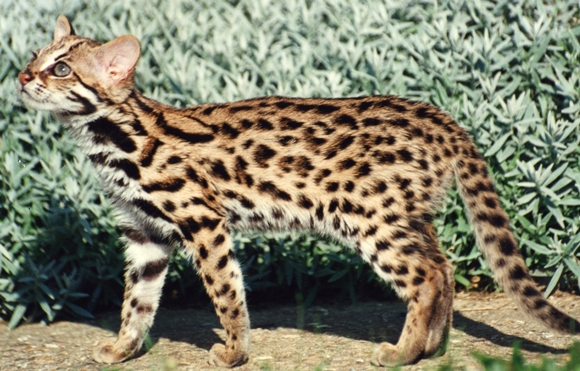
Their fur is also variable, being yellow in the southern populations, but silver-grey in the northern ones. Their chests and lower parts of their heads are white and their bodies bear black markings with patterns that vary dependent on the subspecies - from spots and rosettes, to blotches that cover their entire bodies (there’s more information in subspecies section). They have black ears with one large white spot (ocelli) on the back of each.
Leopard cats live close to
watercourses and are not afraid to swim or fish and they even use the
water as a toilet as it removes their scent - traits that can still
linger in the early Spot (Female Leopard
Cat) - Circa Spring 1997 
Leopard cats are solitary creatures, except during the breeding season. There is no fixed breeding period in the southern part of their range; but in the colder northern parts they tend to breed around March or April, when the weather is nice enough to support newborn cubs. The oestrus period lasts for 5 to 9 days and after a gestation period of 9 to 10 weeks, two to three cubs are born in a den, and there they will remain until they are 1 month old. They open their eyes at 10 days old and start to eat solid food at 23 days. And if the cubs are killed, the mother can come into heat again and have another litter that year.
The Leopard Cat in Captivity and Their Hybridisation
 Generally,
leopard cats do not make good pets and they
should not be kept by those who have no experience with small wild
cats. However, this is not because they are vicious or temperamental
animals, as some believe - it is because even when hand-reared, they
can have timid and delicate natures, especially around strangers.
They do not cope well with any stress in their environments;
one of our hand-reared leopard cats went into shock simply because an
experienced, specialist wild cat vet tried to vaccinate him, and
another did similar when we merely moved him from one enclosure to
another - both cats knew us well, but the way they reacted shows that
members of this species are very different to say, African
leopards, ocelots and servals etc. that, in our
experience, are normally very outgoing, confident and self assured
when hand-reared (ours certainly are).
Generally,
leopard cats do not make good pets and they
should not be kept by those who have no experience with small wild
cats. However, this is not because they are vicious or temperamental
animals, as some believe - it is because even when hand-reared, they
can have timid and delicate natures, especially around strangers.
They do not cope well with any stress in their environments;
one of our hand-reared leopard cats went into shock simply because an
experienced, specialist wild cat vet tried to vaccinate him, and
another did similar when we merely moved him from one enclosure to
another - both cats knew us well, but the way they reacted shows that
members of this species are very different to say, African
leopards, ocelots and servals etc. that, in our
experience, are normally very outgoing, confident and self assured
when hand-reared (ours certainly are).
Jack (Front) & Two
Other Leopard Cats (Behind) + Bobby Dazzler (Right - Bengal Stud) -
Circa February 1998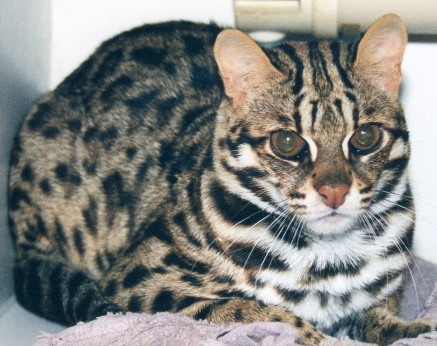 the
cubs we breed, and encourage our young daughter, Kitten Gay, to play
with them - they sleep with her, and she even helps us to bottle feed
them. This human contact makes them much more relaxed, docile and
less flighty when they get older.
the
cubs we breed, and encourage our young daughter, Kitten Gay, to play
with them - they sleep with her, and she even helps us to bottle feed
them. This human contact makes them much more relaxed, docile and
less flighty when they get older.
Sarez Little
L. (Leopard Cat Stud) - September 2001
Due to the leopard cat’s timid character, the differences between their anatomies and genes, and because nature did not intend them to create offspring with domestics, hybridising is very difficult. To date, only a few people in the world have succeeded at it, and in Britain, just two leopard cats have ever bred with domestics - and both of them, Sarez Little L. and Sarez Apollo, are owned by Sarah and I.
All the leopard cat subspecies can hybridise, but not all are suitable for it. Some are scarce and should never be taken away from conservation programmes. And others like the Amur, have coarse, ticked coats with pale markings and when used for hybridising, the resulting Filial 1 (F1) Bengals have the same, so using this subspecies hinders the beauty of the Bengal cat. Sarah and I use exceptionally pretty subspecies which have pale backgrounds and well defined spots and rosettes, but we ensure they’re from the common subspecies, and our endangered ones go into in our Sarez Wild cat Conservation Programme.
Sarez Apollo (Leopard
Cat Stud) - Circa June 2003 
Jack (Right) & His
Sister (Leopard Cats) - Circa August 1997 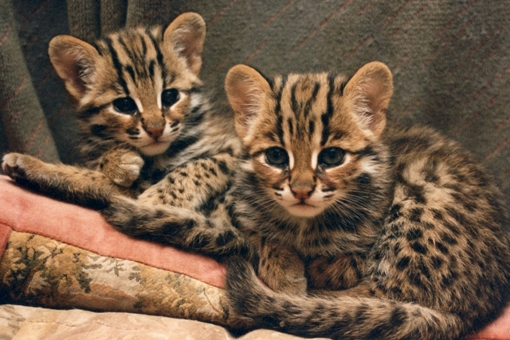
Sonny (Bengal Stud) & Spot
(Leopard Cat) - Late 1997 to Early 1998 
Leopard Cat Conservation
All subspecies of leopard cat were killed for their skin and this is what drove Jean Mill to play such a pivotal part in the creation of the breed - to help bring public awareness to the plight that all wild cats face. Her philosophy was that few ladies would wear a fur coat that resembled a pet cat. These cats were also poached for the pet trade as their size gives the impression that they’re more manageable than other wild cats. Leopard cats are still persecuted, but all subspecies are now protected under CITES, and some such as P.b. bengalensis are listed as endangered whilst P.b. iriomotensis and P.b. tsushimansis are categorised as critically endangered.
Leopard Cat Classification and Subspecies
Kingdom - Animalia.
Phylum - Chordata.
Class - Mammalia.
Order - Carnivora.
Family - Felidae.
Subfamily - Felinae.
Genus - Prionailurus.
Species - Bengalensis.
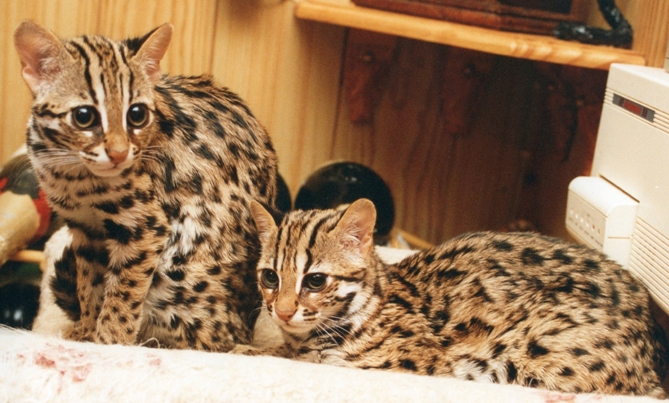 Common
name - Leopard cat (not “Asian leopard
cat” as they are frequently called).
Common
name - Leopard cat (not “Asian leopard
cat” as they are frequently called).
Spot (Left) &
Another Female Leopard Cat - Circa August 1997
Prionailurus bengalensis alleni - Hainan Island.
Prionailurus bengalensis bengalensis - India, Bangladesh, S.E. Asia inc. Yunnan. They have a golden coat with markings that are more elongated than rosetted.
Prionailurus bengalensis borneoensis - Borneo. They are quite rufous in colour.
Prionailurus bengalensis trevelyani - Eastern Pakistan. They are quite grey in colour.
Prionailurus bengalensis euptailura (Amur) - Eastern Siberia, Mongolia, Manchuria. They are largest subspecies and can reach 20 pounds. They live the farthest north and so have a thicker coat. They are rosetted, but more faintly than other subspecies.
Prionailurus bengalensis heaneyi - Philippine island of Palawan. They are dull grey in colour and like the other Philippians’ leopard cat, have small oval spots and no rosettes, and are the smallest of the subspecies (adults are 1.4 to 1.9 kg).
Prionailurus bengalensis rabori (Visayan) - Philippine islands of Negros, Cebu, Panay. They are light tan in colour and like the other Philippians’ leopard cat, have small oval spots and no rosettes, and are the smallest of the subspecies (adults are 1.4 to 1.9 kg).
Prionailurus bengalensis horsfieldi - Himalaya.
Prionailurus bengalensis javanensis - Java. They have dull brown coloration.
Prionailurus bengalensis sumatranus - Sumatra. They have fewer and smaller markings than other subspecies.
 Prionailurus
bengalensis scripta - North Yunnan, West Sichuan, East Tibet,
Southern Gansu. NB. In 1996 it was argued that they are a valid
subspecies, but this is controversial.
Prionailurus
bengalensis scripta - North Yunnan, West Sichuan, East Tibet,
Southern Gansu. NB. In 1996 it was argued that they are a valid
subspecies, but this is controversial.Prionailurus bengalensis manchurica - Manchuria, Northeast China.
Prionailurus bengalensis tingia - Singapore, Malaysia.
Prionailurus bengalensis chinensis - China, Taiwan, Philippines. Thought to be the most beautiful of all the subspecies, they have light golden coats and striking two-tone paw-print rosettes. The Chinese call them “money cats” as their spots look like coins.
Prionailurus bengalensis wagati - Southeast India. NB. Some say this is the Felis genus and is not a subspecies of leopard cat.
Prionailurus bengalensis iriomotensis - Island of Iriomote, Japanese archipelago. The rare Iriomote cat was discovered in 1965 by Yukio Togawa and was originally described as a distinct species based on morphology. However, after genetic analysis, it is now considered to be a subspecies of leopard cat.
One of Our Female Leopard Cats - Circa Early 1998
Prionailurus bengalensis tsushimansis - Tsushima Island, Japan. Listed as a National Treasure, just 100 of these cats exist, and it is believed that they arrived on the island about 100,000 years ago from the Asian continent. They are smaller and darker than other leopard cat subspecies and biologists only recognised and gave them species status in 1988, and recent genetic testing has proven they are a variety of the leopard cat. Some believe the Tsushima cat to be part of the Siberian subspecies (P. b. euptailura) whilst others have said they belong to the subspecies P. b. manchurica. However, they are listed as a separate and distinct subspecies of their own.
Sarah and I have found the leopard cat to be charming to keep and breed. Many of ours are loyal and loving, but they do require specialist care and handling, and so for their sake, they should be kept by experienced keepers only. However, these beautiful little cats have enabled everyone to have a little part of the wild running around their living rooms, in the form of their pedigree descendants. And Bengals come with none of the difficulties of keeping the real thing!
C. Esmond Gay
Sarez Bengals
Copyright 2004 C. Esmond Gay
Dedicated to all our leopard cats
Retirement Addition (2008)
Sarah and I achieved a phenomenal amount during the 11 years that we bred Bengals and many of our accomplishments are still unsurpassed. We obsessively chased every one of our goals and ambitions and didn’t stop until we had succeeded. And everything we did was meticulous and done to perfectionist standards.
However, this entailed working up to 18 hours a day, 7 days a week, and with few breaks or holidays. In hindsight, we did too much too fast because the enormous stress that we put ourselves under, plus looking after hundreds of animals almost single-handedly, took its toll on us mentally, emotionally and physically. By 2004, Sarah and I were suffering from severe exhaustion and so reluctantly, we retired. We hoped to lead a quieter life in Latin America, living and working with their endangered cats.
Our larger wild felines went to wildlife parks, our rescued animals went to sanctuaries and private homes, whilst many of our Bengals and leopard cats went to Pauline and Frank Turnock of Gayzette Bengals - they look after and nurture our cats, and are expanding the breeding programme that we worked so hard to create.
I stay in regular contact with Pauline and Frank and offer them my support and advice on the Bengal and wild cats. I follow their achievements, and behind the scenes, I am there for them and for the beautiful cats that we once so proudly owned.
To
Sarah and me, our cats were more than just pets or breeding animals -
they were our family. And within the articles I wrote, my deeply
emotional descriptions of them and how they influenced our lives,
portrays just how powerfully I love them; and so naturally, I feel
terrible loss and miss them tremendously. However, I am grateful for
the 11 wonderful years that they graced our home, and for the honour
and privilege of being able to share part of my life with them…
and for the amazing memories that they’ve
left me with.
C. Esmond Gay




